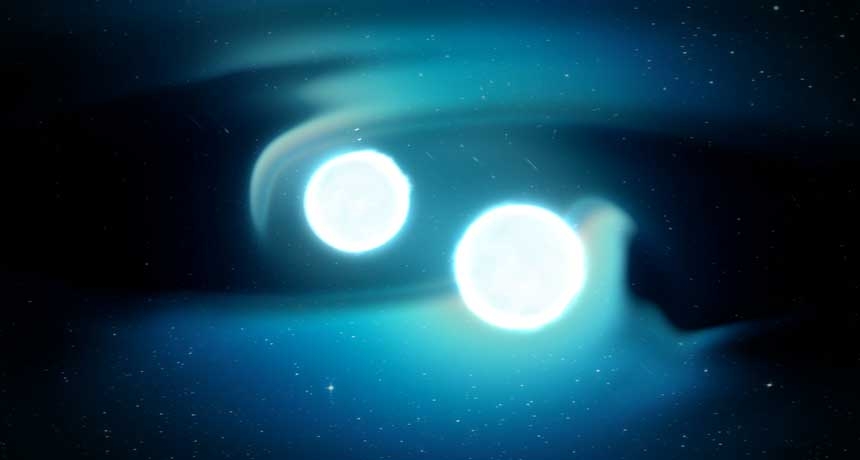LIGO is on the lookout for these 8 sources of gravitational waves

NASA’S GODDARD SPACE FLIGHT CENTER/CI LAB
Astronomers still hope to catch a star going supernova and a bumpy neutron star, among others
BY LISA GROSSMAN 1:14PM, MAY 6, 2019
BANG, CRASH Physicists using the LIGO and Virgo observatories are catching all sorts of cosmic collisions, including of pairs of neutron stars (illustrated). But scientists hope to bag even more exotic quarry.
Seekers of gravitational waves are on a cosmic scavenger hunt.
Since the Advanced Laser Interferometer Gravitational-wave Observatory turned on in 2015, physicists have caught these ripples in spacetime from several exotic gravitational beasts — and scientists want more.
This week, LIGO and its partner observatory Virgo announced five new possible gravitational wave detections in a single month, making what was once a decades-long goal almost commonplace (SN Online: 5/2/19).
“We’re just beginning to see the field of gravitational wave astronomy open,” LIGO spokesperson Patrick Brady from the University of Wisconsin–Milwaukee said May 2 in a news conference. “Opening up a new window on the universe like this will hopefully bring us a whole new perspective on what’s out there.”
The speed and pitch of gravitational wave signals allow astronomers to make out what’s stirring up the waves. Here are the sources of gravitational waves that scientists that already have in their nets, and what they’re still hoping to find.
See full text